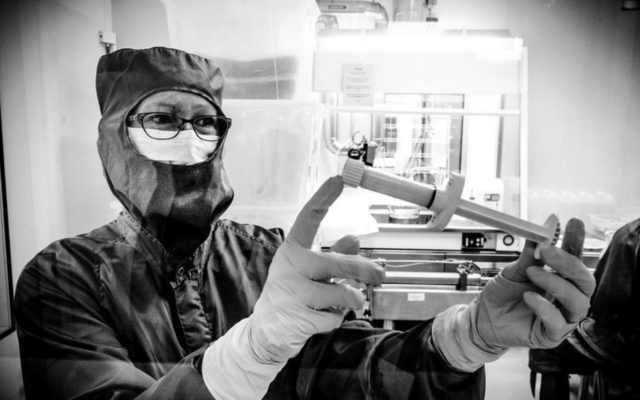Did you know that the idea of turning glass into bone stems from the 1960s? Read the full story here.

Read in Italian (La nostra storia)
Read in French (Notre histoire)
Read in Spanish (Nuestra historia)
Read in Portuguese (Nossa história)
Read in German (Unsere Geschichte)
Glass into bone
In the late 1960s an associate professor called Larry Hench travelled to an Army Materials Conference in Sagamore, New York, and seated himself next to a Vietnam veteran. Their discussions lead into the topic of bone recovery and methods of replacing bone with a man-made material that the body would not reject. The 45S5 Hench glass was soon born. The glass had tissue regenerative properties and bonded tightly to bone while being slowly biodegraded in the body.
A couple of decades after, in the 1980s, at the universities of Turku, Finland, the story of the Hench glass and its composition still puzzled scientists. What would happen if the composition were different, would it bring the same advantages or even new ones? Soon many different new bioactive glass compositions were developed and among them was the formula S53P4. As it turned out, as well as being strikingly osteostimulative (non-osteoinductive), S53P4 was found to have one new additional property that astounded its discoverers: the composition of 53% silica and smaller weights of sodium, calcium and phosphorus gave rise to surface reactions in vitro that appeared to be highly antibacterial by inhibiting bacterial growth – they had developed a material that could not be infected by bacteria.
Bonalive® granules is the only antibiotic-free biomaterial in the world with the claim to inhibit bacterial growth.
More than glass
The superior qualities of the glass did not just trigger excitement in the laboratory – the first patients were treated in Finland at the Turku University Hospital in 1991 with S53P4 implanted into a cavity in the frontal sinus. The post-operative results were more than anyone could hope for: this was the ultimate solution for filling defects in ear, nose and throat surgery as well as in the cranio-maxillofacial area. But could it do more?
Today the story continues – the bioactive glass S53P4 is manufactured and provided worldwide by Bonalive Ltd in Turku Finland, the birth city of the technology. The products come in different package sizes and compositions. One of the Bonalive portfolio products, Bonalive® granules, is the only antibiotic-free biomaterial in the world with the claim to inhibit bacterial growth, with the official indication of bone cavity filling in the treatment of chronic osteomyelitis.
The world needs smarter and more sustainable solutions
Antimicrobial resistance (AMR) is one of greatest challenges facing healthcare today. In the face of growing resistance, we need solutions to an increasingly complex global problem. Solutions that are smarter and more sustainable. Ones which restore the quality of life of every patient to be the best possible. Smart Healing™ solutions represent a new standard for a new era of healthcare. Restoring and sustaining life at the intersection of technology and biology, Smart Healing™ solutions function through a patient’s own biological processes – without the local use of antibiotics. Providing a solution for global healthcare, we enable increasingly more antibiotic-free care for patients.
Antimicrobial resistance (AMR) is one of the greatest challenges facing healthcare today.
The time is now
At Bonalive we take great pride in our story and we want to share it with the world. At the core of our activity lies patient healing. We want to make a change through safe and high-quality innovations that take us beyond the reliability of antibiotics in bone infection surgery. The pain and devastation that chronically infected bone can render in a patient’s daily life, affecting family, work and spare time, is what drives us forward to constantly develop new technologies and applications of our products.